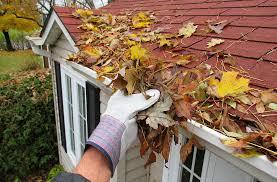
Fall is a critical season for homeowners and communities to take proactive steps in minimizing the risk of wildfires. As the weather cools and leaves start to fall, it's essential to focus on FireSmart practices. One of the most overlooked aspects of wildfire prevention is the management of tree debris, particularly pine and cedar needles. In this article, we'll discuss the importance of clearing tree debris and address the specific risks associated with pine and cedar needles. More information can be found in the FireSmart Begins at home flyer
Understanding the Risks of Tree Debris
Fuel Accumulation - Fallen leaves, pine needles, and cedar needles create a dense layer of flammable material on the ground. If left unchecked, this layer can become a potent source of fuel for wildfires. As noted in the "Begins at Home" guide, the accumulation of tree debris can allow a fire to quickly spread and intensify.
Embers and Ignition Sources - Pine and cedar needles are especially prone to drying out and becoming highly flammable. During fall and winter, embers from distant wildfires, sparks from equipment, or even lightning strikes can easily ignite this tinder-dry material. These ignited needles can serve as firebrands, carried by the wind to other parts of your property or the surrounding area.
FireSmart Practices for Fall
Clearing Debris - Regularly clear fallen leaves, pine needles, and cedar needles from your property. Raking and disposing of this debris is a crucial first step in reducing the risk of fire. Consider creating defensible spaces around your home, where such debris is kept to a minimum.
Proper Storage - Store firewood, propane tanks, and other flammable materials at least 30 feet away from your home and other structures. These materials can act as additional fuel sources for wildfires if they come into contact with ember showers.
Roof and Gutter Maintenance - Remove needles from your roof and gutters to prevent the accumulation of combustible material. A well-maintained roof reduces the risk of embers igniting your home.
Creating Firebreaks - Establish firebreaks by clearing vegetation and tree debris between your property and wooded areas. These firebreaks create a buffer zone that helps prevent the spread of wildfires to your home.
Defensible Space - Follow the recommended guidelines for creating defensible spaces, as outlined in the "Begins at Home" guide. This involves reducing the density of vegetation and trees around your property to minimize the potential fuel for wildfires.
Equipment Safety - Be cautious when using equipment like lawnmowers and chainsaws, which can create sparks. Ensure that equipment is in good working order, and avoid using them on windy days when sparks can easily ignite dry debris.
Community Cooperation - Coordinate with your neighbours and community to implement FireSmart practices collectively. A united effort can significantly enhance the protection of your area against wildfires.
Spark Arrestor – If you use a wood burning fireplace, a nice addition to your chimney (if it is not already installed) is a spark arrestor. This is basically a heavy mesh screen which prevents embers from flying out of your chimney and starting a fire, this is particularly critical if you still have a cedar shake roof. Spark arrestors come in various sizes and styles to match your particular chimney and home design.
